I am trying to get my mojo back and write some new Substacks. I stopped, for a while, because of a combination of factors, I found myself lacking motivation, and also I heard weird things about Substack’s no ideological guardrails policy, that enabled Substack to become a digital soapbox for both regular academics and mad extremists, all of whom were trying to cash in on the platform. Many writers dropped off Substack and migrated elsewhere, but unlike the hugely popular social media platforms like FB, Instagram or X, Substack’s “unrestricted” free speech policy did not mean weird content was diffusing everywhere, you still needed to subscribe to get the content in the first place. I figured for my subscribers, not much changes, so here I go again, I am back to posting stories on my adventures around Italy.
For my first Substack newsletter in 2024, I thought to wrap some texts around a few carefully selected images from our recent visit to Pier Paolo Pasolini’s mini-castle estate, an hours’ drive north from Rome on the A1 Autostrada in the direction of Florence. You need to exit at Orte, a medieval hilltop town Pasolini chose to film for a RAI television program in 1974, for his short urban critique “La forma della città,” (“The form of the city”— wherein Pasolini admires the beauty of this town hanging vertiginously from the high cliffs, but he blasts the ugliness of the newer buildings that were built below ).
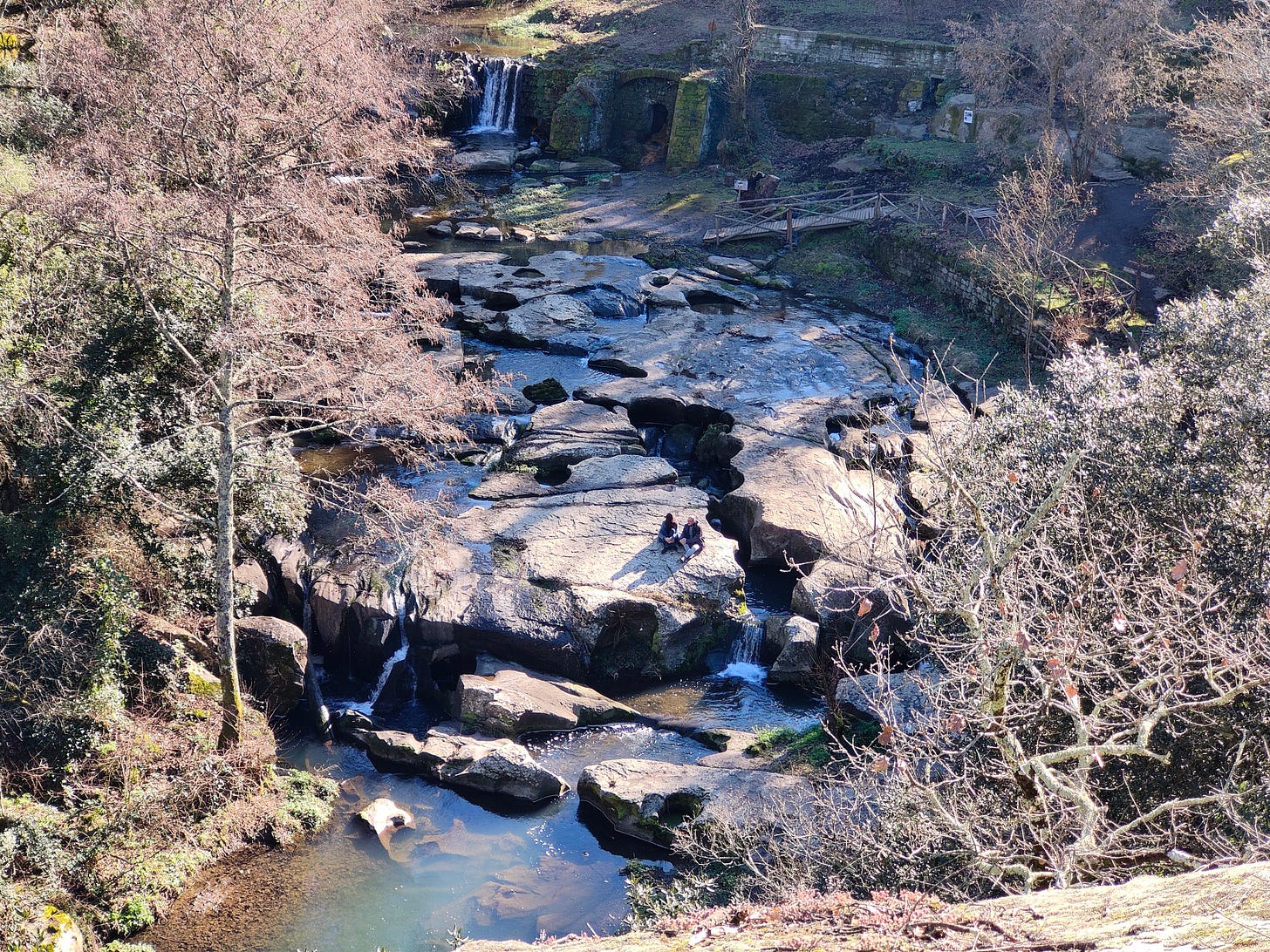
From Orte you can follow a regular road that runs into the park, the Parco delle Cascate di Chia. The film director, poet, artist, and polemicist discovered his dream castle while filming the baptismal scene for his 1964 film The Gospels According to Saint Matthew. I had heard about Pasolini’s medieval castle some years ago, when I first caught a small exhibition of photos that gave an odd keyhole view of Pasolini hanging around his country house in various stages of artistic revelry. This January, I got word from my friends that we could reserve tickets for a guided tour of the director’s home, set in the ruins of the Torre di Chia and the Castello di Colle Casale. While the premises were open to visits in the past, the compound is now in the best shape its ever been. There was a change in ownership, Pasolini’s surviving cousin Graziella Chiarcossi recently sold the property to two young enthusiasts, who conducted a meticulous restoration that is nearing completion. The grounds have been re-opened for monthly organized visits.
We were ushered through the park by a very dedicated volunteer, Fabrizio Allegrini who is from the nearby town of Soriano nel Cimino. With a worn notebook in tow, he read to us about the various highlights of the site, obviously its scenic falls, the remains of the mills, an Etruscan tomb, and the castle above, on a unique promontory overlooking hundreds of kilometers of magnificent Latium landscape.
Its hard to imagine that such a prominent castle dating back to the 13th century, with its ancient walls, millenary trees and 42 meter high tower would be available for purchase back in 1970, when Pasolini sealed the deal. He would go on to insert into the castle ruin a series of wood, glass and stone enclosures that backed into the perimeter of the ancient castle wall. The final result was a series of low slung single story interconnected structures that took the shape of a half-crescent facing a small garden in the middle. The sloped wood roofs radiate towards the center, and each of these straightforward facades featured large panoramic windows framing the views across the valley.
I had in mind something entirely different. I thought the castle would have been sufficiently intact, with rudimentary rooms, gothic windows and medieval fireplaces adorned with ancient family crests. Instead, when you enter the castle itself, past the fortified walls and tower that delineate the large property to the south, you realize that nothing of the palatial structure remains intact. I misjudged Pasolini, I thought he was a traditionalist, a man obsessed with agrarian culture and rudimentary landscapes. But the house that Pasolini inserted into the decayed remains of the castle is an organic architectural masterpiece, a sort of Frank Lloyd Wright inspired composition. The way the building components snuggle into the inside perimeter of the castle walls, and the way the bold panoramic windows face the view towards the hills, are very understated, and certainly excessive, nor monumental.
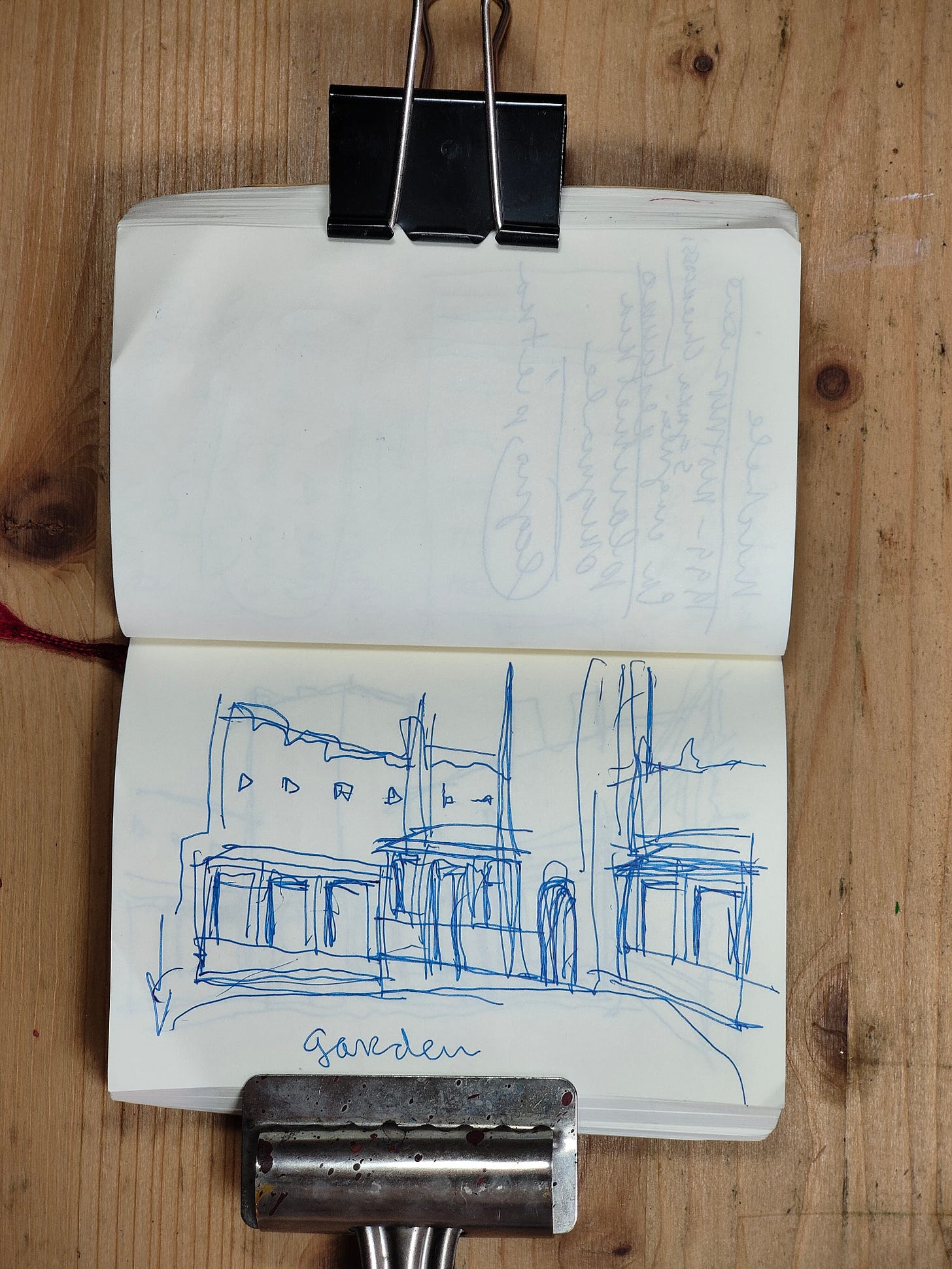
The new owners of the Castle have committed significant resources to preserving the original wood structure, including the delicate wood venetian blinds, and single pane glass windows, along with the stonework. The renovation worked with only what was already there. The owners, however, are requesting that visitors refrain from taking photos, selfies, or videos while inside the grounds and house. Though this is frustrating at first, these are their private living quarters, and they don’t want themselves and their lives spreading all over social media. This is why I can only show a couple sketches from my notebook, to give a general idea of what the place looks like.
From 1970 until Pasolini met his untimely and tragic death in 1975, he kept tweaking the project, working in the gardens and restoring the ancient walls of the castle. He also added, with the help of his scenographer Dante Ferretti, a small but very spartan flat-roofed building just outside the house-castle where Pasolini would go to write and paint. In these last years at the castle he spent a lot of his time working on the manuscript for his epic book, Petrolio. The book was supposed to be a sum total of his life, and indeed it reads as a rolling introspection:
Up to this point, the reader will certainly have thought that everything in this book naturally and inevitably refers back to reality. It is only slowly as the reader progresses in his reading and thus retraces the author's path that he will realize that this book, on the other hand, refers to nothing but himself. Pier Paolo Pasolini, Petrolio, (43).

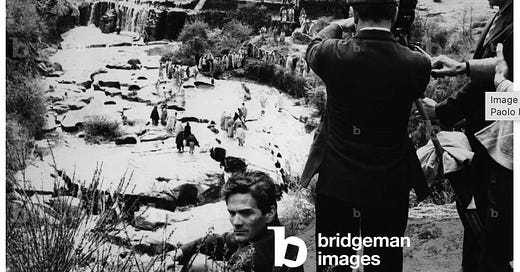



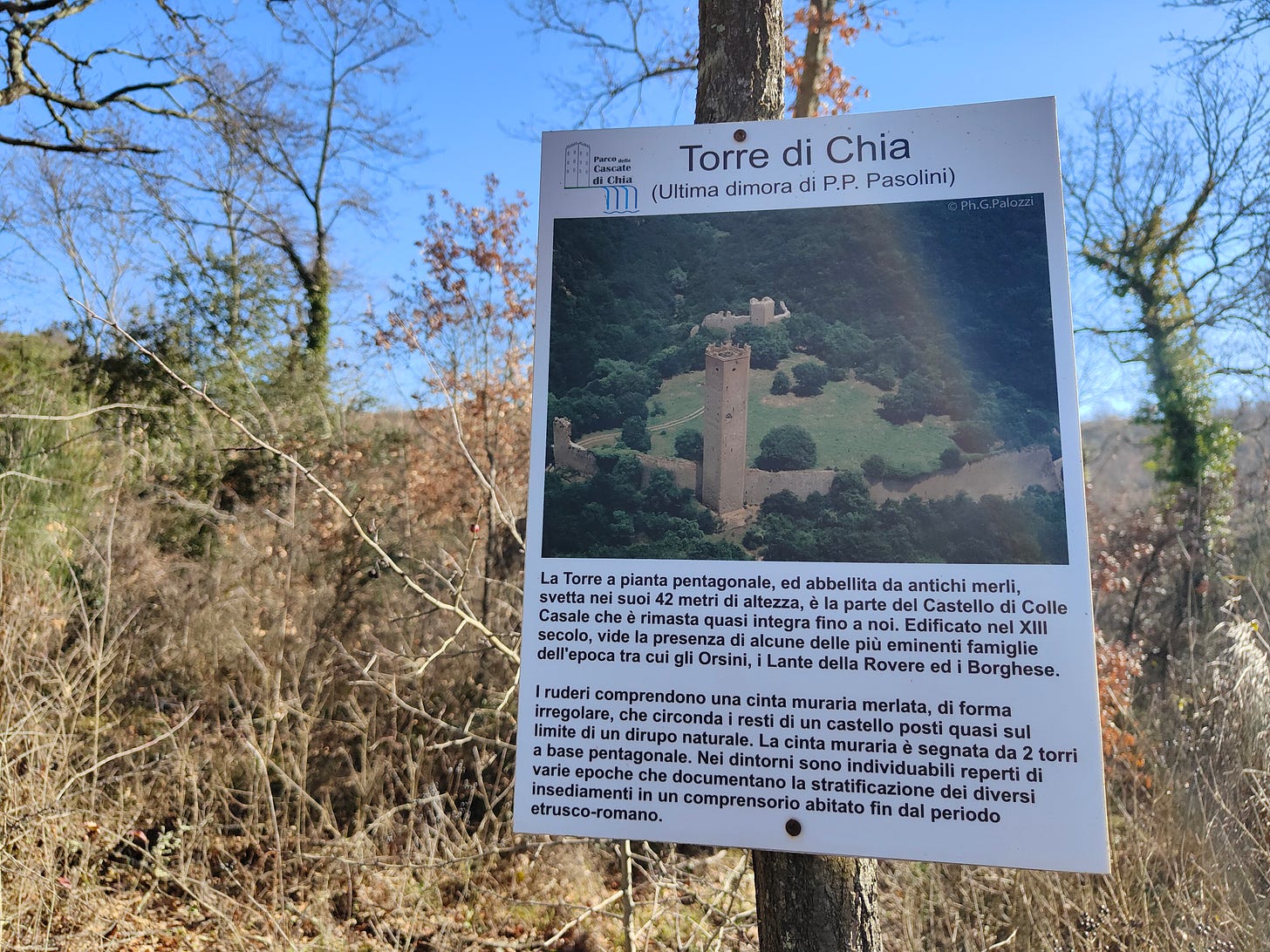
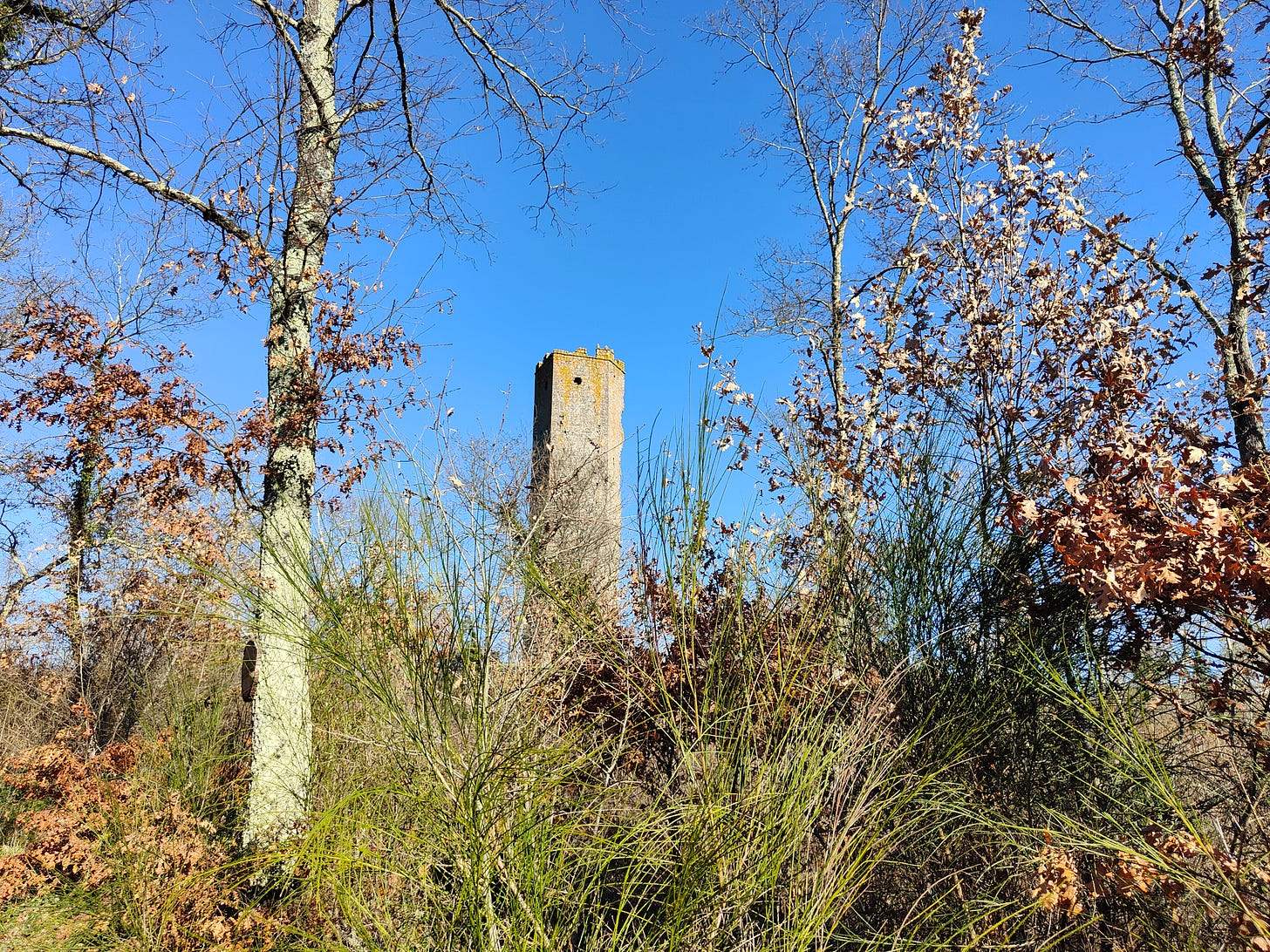
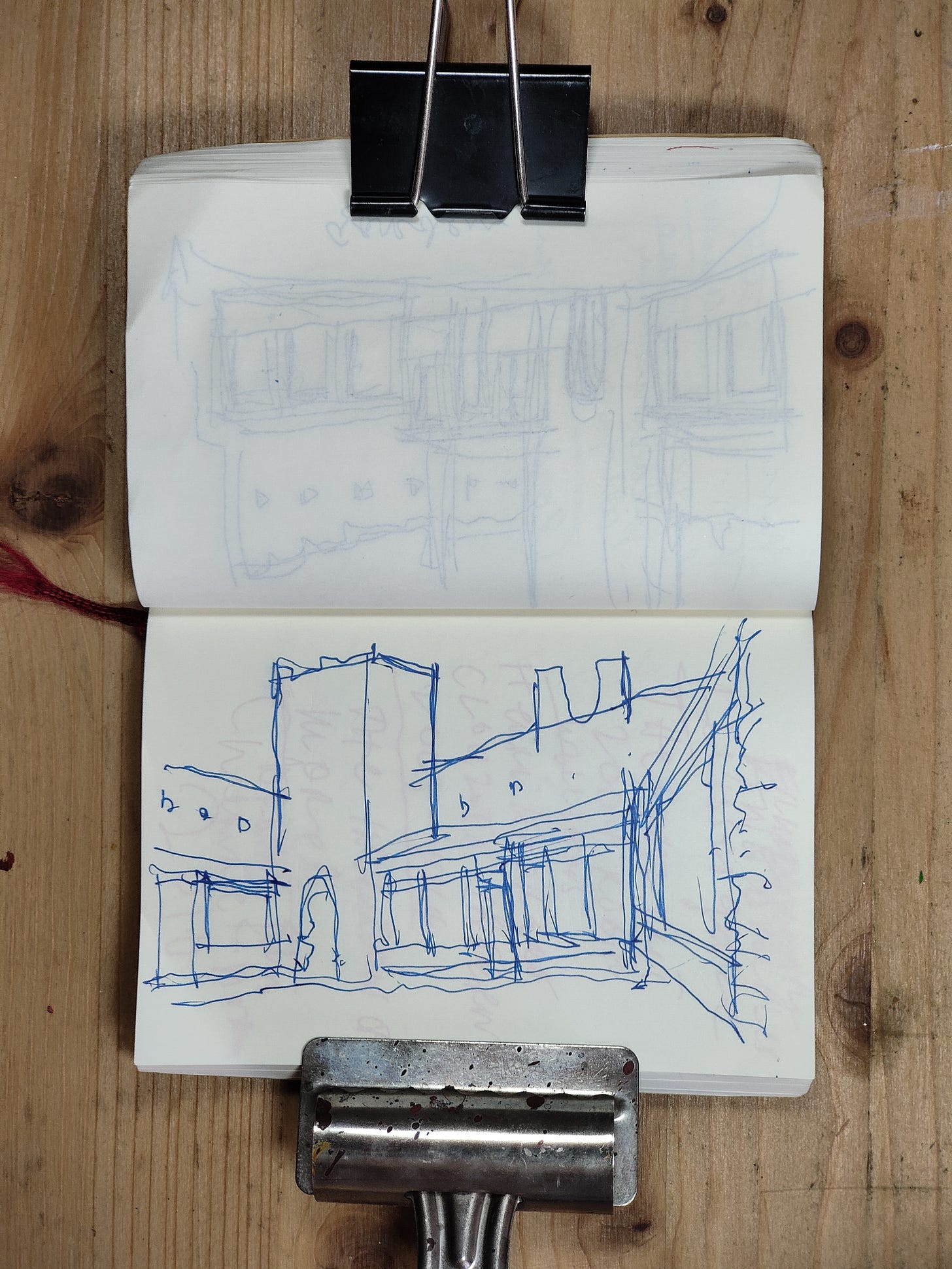
Great visit!
Keep spreading the word 😍